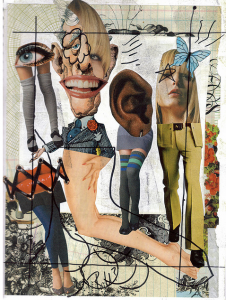Finals are just around the corner! What a great time to revisit a study I read recently that announced a sure-fire way to study for tests: reorganize information in your own way.
Over the years as an academic coach, I’ve been helping students practice their own unique ways to do this. Some make posters; others prefer flashcards or mind maps. Some make charts and graphs; others write songs. Not only is this study method scientifically proven, but it works for learning styles of all types, which is why I call it one-size-fits-all.
In order to explain this process in more detail, I’d like to return to my client Lyndsey, about whom I wrote a few weeks ago. Lyndsey struggles with procrastination. All year long I’ve been working with Lyndsey to build a habit of practicing her anatomy flashcards regularly, and she never follows through. I concluded that instead of being lazy, Lyndsey simply hadn’t found the right study method yet.
Remembering the study alluded to above, I suggested that Lyndsey reorganize her anatomy notes after each lecture. This week she showed up to my session announcing that she had, indeed, tried this new tactic. “And it works!” she said.
She hauled out her binder, and showed me the before and after pictures:
| Provided by Teacher: | Reassembled by Student: |
 |
 |
Note how the teacher’s notes are formatted in a list. Lyndsey’s notes, however, have more “shape” to them as she visualizes the flow of ideas using arrows, circles, and placement on the page. It’s clear that Lyndsey thought actively about the information she was learning as she reviewed her notes. Way to go!!
I’m always psyched when my clients have insightful observations about new strategies they try; I was thrilled that Lyndsey reported several benefits to this review process that she now calls “reassembling”:
- First, it helped her notice that there were holes in her lecture notes. Reorganizing the notes the evening of the lecture gave her a chance to look up the missing information, something she’s never done before.
- Secondly, it helped her notice that the information being presented was actually a flow chart; she never would have noticed this if she hadn’t forced herself to look closely — and critically! — at the teacher’s notes.
- Finally, noticing the flow of the information helped her to understand how the facts relate to each other, which in turn helped her memorize them. She’ll need to continue reviewing the information each day to fully memorize the entire list, but she’s well on her way!
And now: please tell stories! Do you, dear readers, have experience with “reassembling” your notes before tests? What’s your favorite method? I’d love to hear.
Art by Derrick Tyson on Flicker.
P.S. If you know a student who you think could use this information, be sure to forward this article to them!

